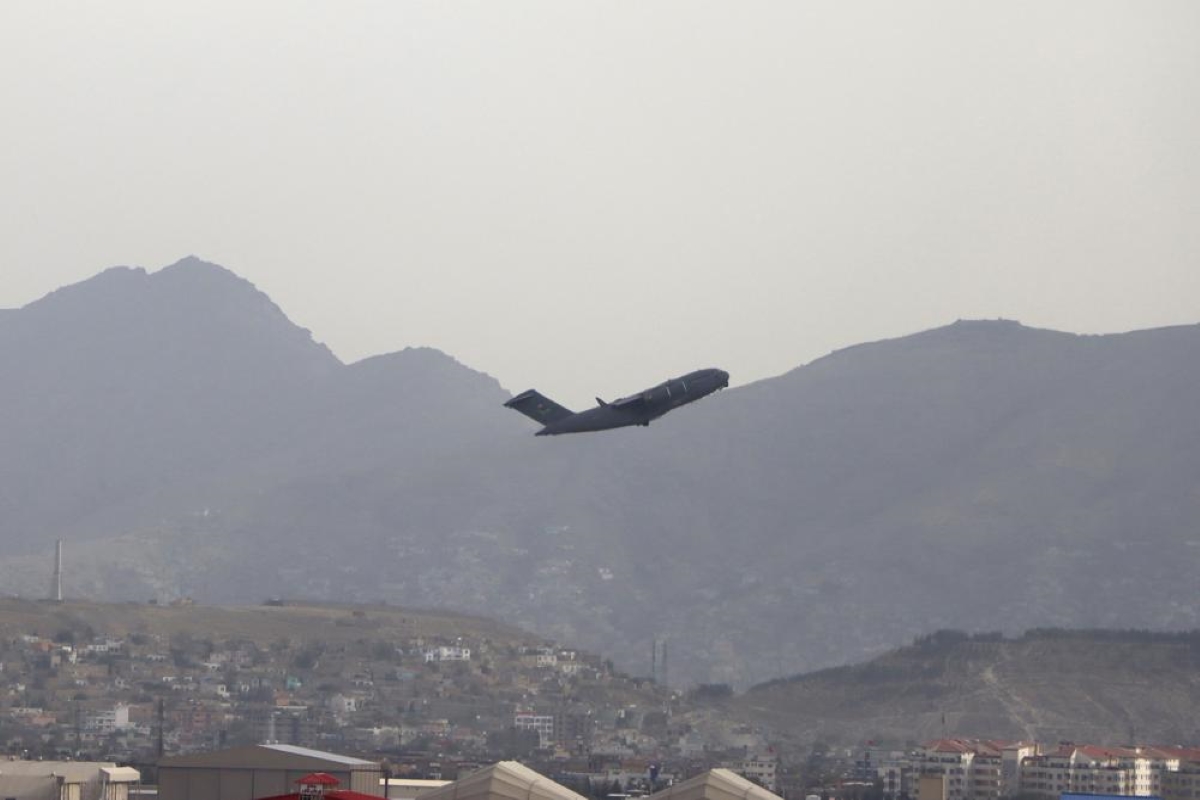Afghanistan receives over 8,000 foreign tourists in two years
More than 8,000 foreign tourists visited Afghanistan over the past two years, local media TOLOnews reported Saturday, citing a government official.
The U.S. failures were numerous. It degraded but never defeated the Taliban and ultimately failed to build an Afghan military that could hold off the insurgents, despite $83 billion in U.S. spending to train and equip the army.

A US military aircraft takes off from the Hamid Karzai International Airport in Kabul, Afghanistan.
America’s longest war culminated as it withdrew its last troops from Afghanistan and in its final days entailed gigantic failures, rise of a tyrannical outfit, losses of lives and a nation in tatters.
Thousands of troops had spent a harrowing two weeks protecting the airlift of tens of thousands of Afghans, Americans and others seeking to escape a country once again ruled by Taliban militants.
In announcing the completion of the evacuation and war effort. Gen. Frank McKenzie, head of U.S. Central Command, said the last planes took off from Kabul airport at 3:29 p.m. Washington time, or one minute before midnight in Kabul.
Advertisement
He said a number of American citizens, likely numbering in “the very low hundreds,” were left behind, and that he believes they will still be able to leave the country.
Secretary of State Antony Blinken put the number of Americans left behind at under 200, “likely closer to 100,” and said the State Department would keep working to get them out.
He praised the military-led evacuation as heroic and historic and said the U.S. diplomatic presence would shift to Doha, Qatar.
Biden said military commanders unanimously favored ending the airlift, not extending it. He said he asked Blinken to coordinate with international partners in holding the Taliban to their promise of safe passage for Americans and others who want to leave in the days ahead.
The acme was dramatic as American troops were tackling evacuation of the final batch and getting themselves and some of their equipments out while monitoring repeated threats. A suicide bombing on 26 August killed 13 American service members and some 169 Afghans.
The final pullout fulfilled Biden’s pledge to end what he called a “forever war” that began in response to the attacks of 11 September 2001, that killed nearly 3,000 people in New York, Washington and rural Pennsylvania.
The US war effort at times seemed to grind on with no endgame in mind, little hope for victory and minimal care by Congress for the way tens of billions of dollars were spent for two decades. The human cost piled up – tens of thousands of Americans injured in addition to the dead.
More than 1,100 troops from coalition countries and more than 100,000 Afghan forces and civilians died, according to Brown University’s Costs of War project.
In Biden’s view the war could have ended 10 years ago with the U.S. killing of Osama bin Laden, whose al-Qaida extremist network planned and executed the 9/11 plot from an Afghanistan sanctuary.
Congressional committees, whose interest in the war waned over the years, are expected to hold public hearings on what went wrong in the final months of the U.S. withdrawal.
It was not supposed to end this way. The administration’s plan, after declaring its intention to withdraw all combat troops, was to keep the U.S. Embassy in Kabul open, protected by a force of about 650 U.S. troops, including a contingent that would secure the airport along with partner countries. Washington planned to give the now-defunct Afghan government billions more to prop up its army.
Biden now faces doubts about his plan to prevent al-Qaida from regenerating in Afghanistan and of suppressing threats posed by other extremist groups such as the Islamic State group’s Afghanistan affiliate.
The final US exit included the withdrawal of its diplomats.
The airlift began in such chaos that a number of Afghans died on the airfield, including at least one who attempted to cling to the airframe of a C-17 transport plane as it sped down the runway.
By the evacuation’s conclusion, well over 100,000 people, mostly Afghans, had been flown to safety. The dangers of carrying out such a mission came into tragic focus last week when the suicide bomber struck outside an airport gate.
Speaking shortly after that attack, Biden stuck to his view that ending the war was the right move. He said it was past time for the United States to focus on threats emanating from elsewhere in the world.
“Ladies and gentlemen,” he said, “it was time to end a 20-year war.”
The war’s start was an echo of a promise President George W. Bush made while standing atop the rubble in New York City three days after hijacked airliners slammed into the twin towers of the World Trade Center.
“The people who knocked these buildings down will hear all of us soon!” he declared through a bullhorn.
Less than a month later, on 7 October, Bush launched the war. The Taliban’s forces were overwhelmed and Kabul fell in a matter of weeks. A US-installed government led by Hamid Karzai took over and bin Laden and his al-Qaida cohort escaped across the border into Pakistan.
Some parts of the country modernized during the U.S. war years, and life for many Afghans, especially women and girls, improved measurably. But Afghanistan remains a tragedy, poor, unstable and with many of its people fearing a return to the brutality the country endured when the Taliban ruled from 1996 to 2001.
The U.S. failures were numerous. It degraded but never defeated the Taliban and ultimately failed to build an Afghan military that could hold off the insurgents, despite $83 billion in U.S. spending to train and equip the army.
Advertisement